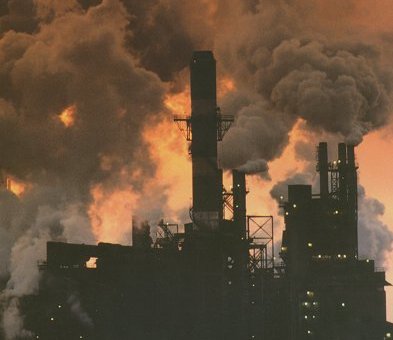Breath is toxic waste?
By Steven Milloy
Thursday, March 6, 2008
The federal government may soon declare your very breath to be toxic regardless of its minty freshness.
Consistent with last spring’s Supreme Court ruling that the Environmental Protection Agency may regulate carbon dioxide (CO2) as a hazardous air pollutant, the agency is evaluating how CO2 could be regulated as a hazardous substance under its notorious Superfund program, according to Carbon Control News (Mar. 4).
So at the risk of exhaling and being held retroactively liable (more on that later), let’s take a deep breath and consider the potential impact of likening CO2 to the substances of concern at Love Canal, Times Beach and the thousands of other former and current Superfund waste sites and dumps across the nation.
The Superfund law was enacted by a lame-duck Democrat Congress and signed into law by a lame-duck President Carter in December 1980. The impetus for the law was the fiasco at Love Canal, NY, which was caused by local officials who recklessly built a school on top of a known chemical dump.
Municipal contractors punctured the dump’s clay lining multiple times. Chemical wastes seeped into the ground, contaminated the groundwater, and generally made a gooey mess of the area. The situation went from bad to full panic when, in 1978, the president of the local homeowners association claimed the situation was sickening local children.
Though no health effects were ever
linked with leaking waste, Love Canal became synonymous with “disaster,” prompting the Superfund law, a national program to identify and clean-up hazardous wastes sites across the country.
Hundreds of locations across the country were designated as “hazardous waste sites” -- not because anyone’s health or the environment was necessarily at risk, but so that every state could share in the federal dollars porked-out for clean-ups. Political science, rather than conventional science, often steered the Superfund program.
Superfund itself soon became a disaster, in large part because of its imposition of “retroactive liability” -- the punishment of past, but at the time, entirely legal conduct.
If a site was deemed by the EPA to pose a risk to human health -- say, by divining as little as a 0.01 percent increase in the risk of cancer to a hypothetical person who, however implausibly, might one day subsist on a site’s most contaminated soil and groundwater -- then the owners and users of the site could be held liable for the typically exorbitant, EPA-determined clean-up costs, regardless of whether the wastes were disposed of properly according to the law at the time of disposal.
By the mid-1990s, retroactive liability fueled an explosion of costly and time-consuming Superfund litigation. Only the lawyers cleaned up. Little progress was made on actual site remediation.
Despite that heritage, the EPA is apparently now figuring out how to throw CO2 (and its emitters) under the Superfund train.
This most likely will be a problem for coal-fired power plants -- generators of about half of America’s electricity -- and other large industrial facilities (to the extent that any still exist in the U.S.) that may be forced by future greenhouse gas regulation to capture and sequester emissions. Carbon capture and storage advocates imagine that CO2 emissions will be transported from facilities by pipeline to underground geological formations where they hope the gas will be permanently stored.
But as recently reported in this
column, a report from the Congressional Research Service spotlighted the many problems with underground CO2 sequestration, including leaking which could harm groundwater by acidifying it. Groundwater clean-up can be extremely difficult and was often a key driver of expensive Superfund cleanups.
Federal regulation of CO2 as a “hazardous substance,” whether under Superfund or some other law, may bring a host of other problems along with it. Once a substance is labeled or regulated by one federal program, it can automatically or inadvertently become eligible for additional regulation under other government programs without further affirmative government action.
As an example, the 1986 explosion at the Union Carbide plant in Bhopal, India prompted Congress to pass, and President Reagan to sign, the Emergency Planning and Community-Right-to-Know Act, establishing a program known as the Toxic Release Inventory (TRI).
Under the TRI, makers, transporters and users of certain hazardous chemicals are responsible for reporting what chemicals they store at their facilities so that local communities may be prepared in the event of disaster. The list of chemicals initially subject to TRI reporting was literally just thrown together from other lists of industrial chemicals already regulated in some way shape or form. All of the listed chemicals were wrongly assumed to be Bhopal-dangerous.
Phosphoric acid for example, which is used in colas and baked goods, was caught in the TRI snare and added to the list of “toxic” chemicals subject to reporting. Even though phosphoric acid is classified as “generally recognized as safe” by the Food and Drug Administration and there was no evidence that phosphoric acid had ever harmed anyone or the environment, it took a decade and a court order for phosphoric acid users to compel an ever-reluctant EPA to delist the substance from the TRI.
You may then understand, perhaps, how the federal government’s designation of CO2 as a “hazardous substance” could easily turn into an unfortunate unintended consequence, say, for the soft drink industry, which puts CO2 in its products.
It’s enough to make you wonder why a company like PepsiCo belongs to the U.S.
Climate Action Partnership, an industry/environmental activist coalition leading the charge on Capitol Hill to have CO2 branded as an environmental hazard.
Just don’t hold your breath to see how all this turns out -- you just might become a Superfund site yourself.
Steven Milloy publishes JunkScience.com and DemandDebate.com. He is a
junk science expert, and
advocate of free enterprise and an adjunct scholar at the Competitive Enterprise Institute.







